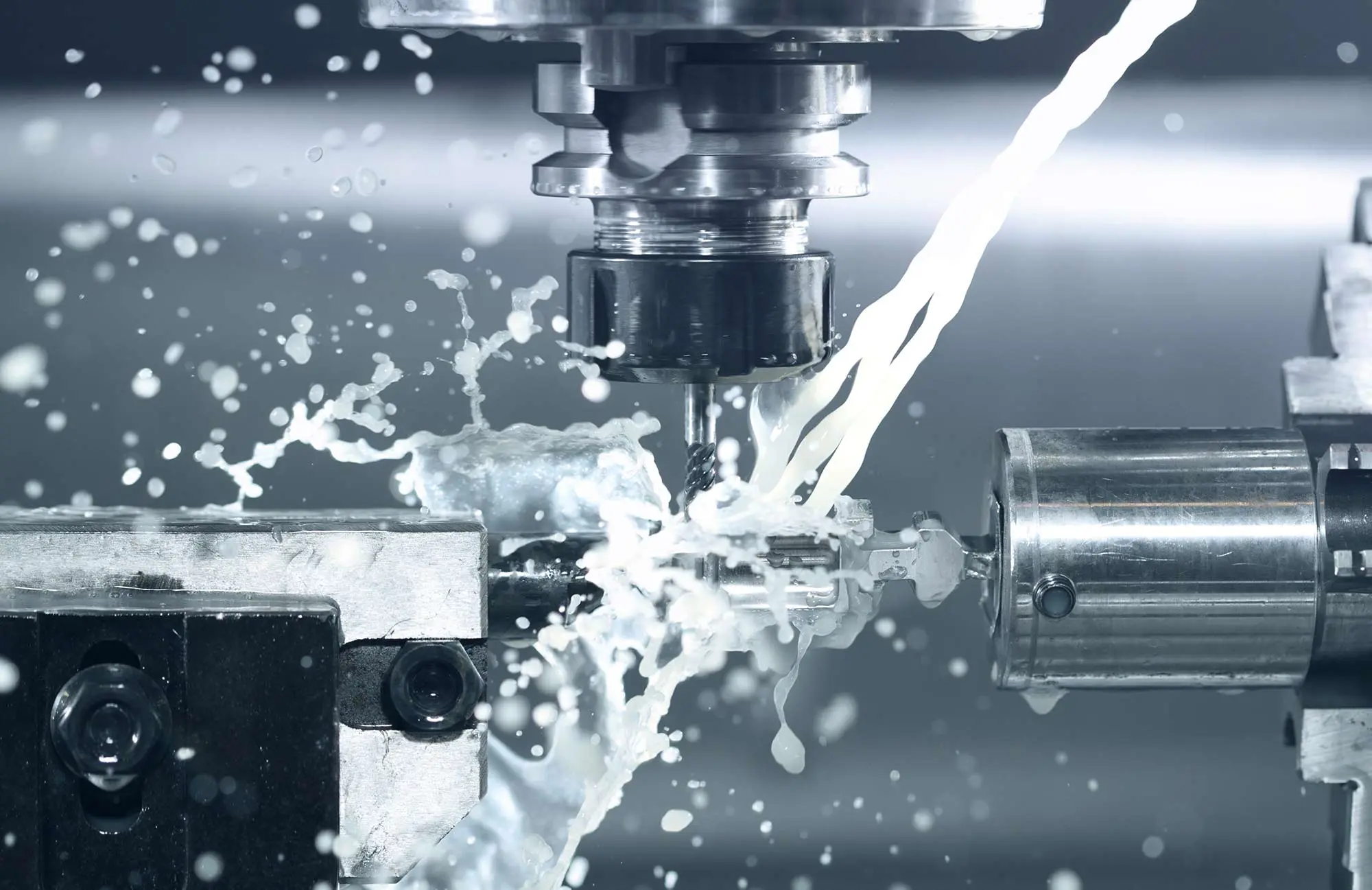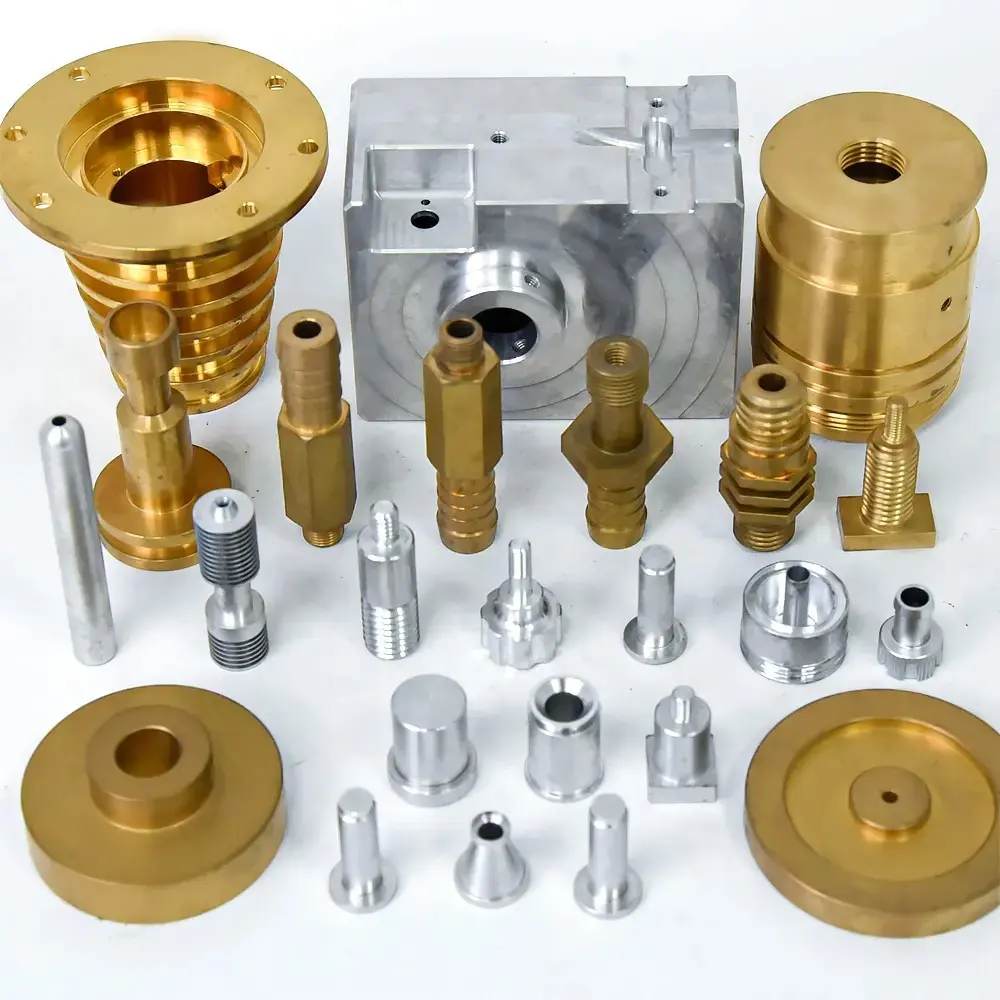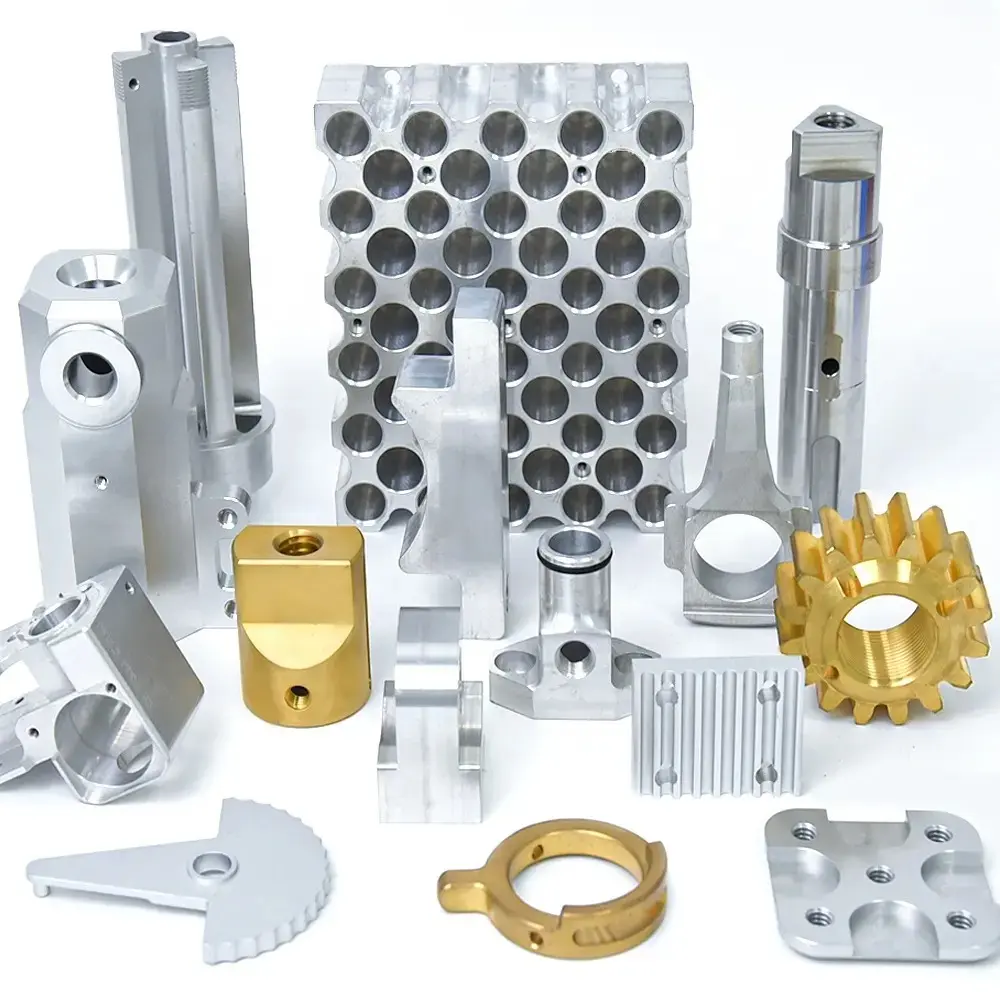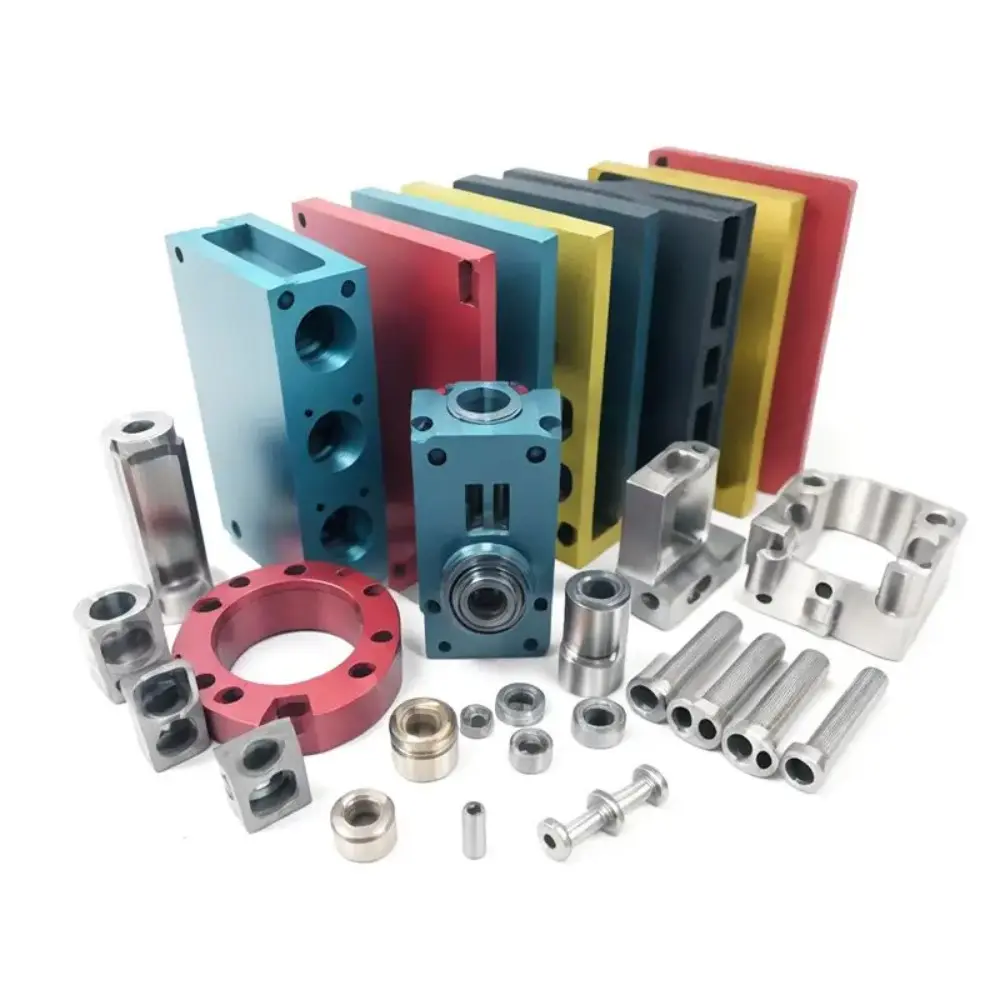Rapid Prototyping CNC Machining Services: A Comprehensive Guide
Introduction to Rapid Prototyping CNC Machining Services
In the fast-paced world of product development, companies constantly strive to bring their ideas to life quickly and cost-effectively. One of the most effective ways to achieve this is through Rapid Prototyping. This process allows businesses to create functional prototypes that help them validate designs before full-scale production. When combined with CNC Machining, this method provides unparalleled precision and flexibility, making it a critical tool in various industries such as automotive, aerospace, medical devices, and consumer electronics.
CNC Machining, or Computer Numerical Control Machining, is a manufacturing process that uses pre-programmed computer software to control the movement of tools and machinery. These machines can create parts from a wide range of materials, including metals, plastics, and composites. Rapid Prototyping CNC Machining Services offer companies the ability to produce high-precision prototypes quickly, minimizing the time-to-market and reducing overall development costs.
Importance of CNC Machining in Prototyping
The integration of CNC Machining into Rapid Prototyping has transformed product development. CNC machines provide several advantages, such as:
- High precision: CNC machines can create parts with tolerances as tight as a few microns, ensuring prototypes match the design specifications exactly.
- Speed: Rapid Prototyping with CNC machining can significantly reduce production time compared to traditional methods, enabling quicker iterations and faster time-to-market.
- Customization: CNC machines can easily adapt to produce custom designs, making them ideal for one-off prototypes or small batches.
Together, Rapid Prototyping CNC Machining serves as an invaluable tool for manufacturers seeking to develop prototypes that are not only functional but also cost-effective.
What Are the Main Production Processes of Rapid Prototyping?
The field of Rapid Prototyping encompasses various manufacturing techniques. The choice of method often depends on factors such as the desired material, complexity of the design, and required precision.
Additive Manufacturing
Additive manufacturing is a category that includes 3D printing techniques such as Stereolithography (SLA), Selective Laser Sintering (SLS), and Fused Deposition Modeling (FDM). These methods build prototypes layer by layer from a material (plastic, metal, or resin), which makes them ideal for producing complex geometries with minimal waste.
While additive manufacturing excels in prototyping, it does have limitations in terms of material properties, finish quality, and overall strength. Additionally, some 3D printing methods may not deliver the required precision for functional prototypes, especially when the prototype is intended for mechanical testing.
Subtractive Manufacturing (CNC Machining)
Subtractive manufacturing refers to processes like CNC Machining, where material is removed from a solid block using various tools (mills, lathes, drills). This method is highly precise and can work with a wide variety of materials, including metals, plastics, and composites. Unlike additive manufacturing, which builds up material, subtractive methods remove material, allowing for superior surface finish, tight tolerances, and greater material integrity.
The most commonly used CNC processes for prototyping include:
- CNC Milling: Used for creating complex shapes with high precision.
- CNC Turning: Ideal for parts with circular geometries.
- CNC Drilling: Essential for creating holes in prototypes.
Hybrid Prototyping
Hybrid prototyping combines both additive and subtractive methods to leverage the strengths of each. For example, a prototype might be 3D printed first to create an initial form, then finished using CNC machining to add fine details or ensure strength. This approach is ideal for projects that require both speed and precision.
What is Rapid Prototyping Service?
Rapid Prototyping Services are professional services that provide businesses with the tools and expertise to create prototypes quickly. These services typically include consultation, design, material selection, manufacturing, and post-processing. The goal is to offer a fast, cost-effective solution for developing prototypes that meet the functional and aesthetic requirements of a product.
Benefits of Rapid Prototyping Services
- Speed: One of the primary benefits of rapid prototyping is the speed at which a prototype can be produced. By using advanced machines and techniques, prototypes can often be produced in a matter of days or even hours.
- Cost-Effective: While traditional prototyping methods can be expensive, rapid prototyping can reduce costs by eliminating the need for expensive tooling and molds. Additionally, the speed of the process means that companies can begin testing designs sooner and iterate faster, reducing the likelihood of costly mistakes in the later stages of production.
- Design Validation: Rapid prototyping allows businesses to test their designs quickly in real-world conditions, ensuring that they function as intended. This process can be particularly useful in the automotive, aerospace, and medical industries, where product failure can have serious consequences.
- Customization: Companies can quickly adapt their designs and test variations, helping them tailor the prototype to meet specific requirements or solve unforeseen challenges.
What Is CNC Rapid Prototyping?
CNC Rapid Prototyping combines the precision of CNC Machining with the fast turnaround times of prototyping. It enables manufacturers to create prototypes that are not only highly accurate but also functional, ready for testing and integration into larger systems. Unlike traditional prototyping methods, CNC rapid prototyping can produce parts with complex geometries and tight tolerances that are often required in industries like aerospace and medical device manufacturing.
Types of CNC Machines Used in Prototyping
Different types of CNC machines are used in rapid prototyping, each suited to specific tasks:
- CNC Milling Machines: These machines are versatile and can create intricate 3D geometries. Milling is particularly effective for prototyping small to medium-sized parts, such as housings, brackets, and gears.
- CNC Lathes: CNC lathes are ideal for creating parts with cylindrical shapes. They are commonly used for prototyping shafts, bushings, and rings.
- Multi-axis CNC Machines: These advanced machines allow for machining complex parts from multiple angles. Multi-axis machines are often used in aerospace and medical device prototyping due to their ability to work on intricate geometries.
Comparison with Other Rapid Prototyping Techniques
While 3D printing and casting are popular methods for rapid prototyping, CNC rapid prototyping stands out in several key areas:
- Precision: CNC machines offer micron-level precision, ensuring that prototypes are accurate and function as intended.
- Material Range: CNC machines can work with a wider range of materials, including metals (such as aluminum, stainless steel, and titanium), plastics, and composites.
- Surface Finish: CNC machining produces a superior surface finish compared to most 3D printing techniques, making it ideal for functional parts that require smooth, durable surfaces.
Why Use CNC Machining to Manufacture Rapid Prototyping?
Precision and Accuracy
CNC machining is known for its ability to achieve incredibly precise dimensions and tight tolerances. This is particularly crucial for industries like aerospace, automotive, and medical devices, where the smallest variations can lead to performance issues or even failure. The ability to produce high-quality prototypes with tight tolerances helps reduce the need for costly reworks and increases confidence in the design’s viability.
Materials Compatibility
Another significant advantage of CNC machining in rapid prototyping is its versatility in terms of material compatibility. CNC machines can work with a wide variety of materials, from soft plastics to high-strength metals. This allows businesses to produce prototypes that mimic the final product’s performance, making it possible to test fit, form, and function before committing to mass production.
Cost Efficiency and Speed
Though CNC machining can have higher initial setup costs compared to some other prototyping methods, its speed and efficiency make it cost-effective in the long run. After the initial setup, CNC machines can produce prototypes quickly and in large quantities, which reduces the overall cost per part. Additionally, the precision of CNC machining reduces the likelihood of errors, saving both time and money in the production process.
Customization and Scalability
CNC machining is highly customizable, making it ideal for developing custom prototypes. Whether you need a single prototype or a small batch of parts, CNC machining can scale to meet your needs without compromising quality or accuracy.
What Rapid Prototyping Parts Can Be Manufactured Using CNC Machining?
CNC machining is used to produce a wide variety of prototypes, ranging from simple parts to complex, highly detailed components. Below is a table showing examples of parts that can be manufactured using CNC Machining:
| Product Name | Part Name | Use Location | Material | Performance Parameters |
|---|---|---|---|---|
| Automotive Component | Gearbox Housing | Automotive | Aluminum Alloy | High strength, heat resistance, lightweight |
| Medical Device | Surgical Tool | Hospital/Clinic | Stainless Steel | Biocompatibility, corrosion resistance |
| Aerospace Part | Wing Bracket | Aircraft | Titanium Alloy | High strength-to-weight ratio, fatigue resistance |
| Consumer Electronics | Enclosure for Circuit Board | Home or Office | ABS Plastic | Electrical insulation, impact resistance |
| Robotics Part | Robot Arm Joint | Industrial Factory | Carbon Fiber Reinforced Polymer | High durability, low weight, flexibility |
These examples illustrate the diverse range of parts that CNC machining can produce, offering industries unparalleled flexibility in prototype development.
The Advantages of CNC Machining in Rapid Prototyping
CNC machining provides several advantages over other prototyping methods:
- High Precision: CNC machines offer micron-level precision, ensuring that prototypes are manufactured to the exact specifications of CAD models.
- Wide Material Compatibility: CNC machining works with a broad range of materials, giving designers flexibility in selecting the best material for their prototype.
- Superior Surface Finish: CNC machining provides a higher-quality surface finish compared to additive manufacturing methods, making it ideal for functional prototypes.
One-Stop Post-Processing and Finishing Services
After a prototype is manufactured, post-processing may be required to achieve the desired finish or functional properties. Post-processing services can include:
- Surface Finishing (e.g., polishing, anodizing, powder coating)
- Heat Treatment for improving strength and durability
- Assembly Services for prototypes with multiple components
These finishing services ensure that prototypes are ready for testing, integration, or customer presentation.
Great Light CNC Machining Services – The Best Choice for Rapid Prototyping
As a leading provider of High-Precision Rapid Prototyping CNC Machining Services, Great Light specializes in producing highly complex prototype parts using the latest CNC technology. With years of experience and a commitment to quality, Great Light offers fast, reliable, and cost-effective solutions for industries like automotive, aerospace, and medical devices.
Why Choose Great Light?
- Expertise: Decades of experience in CNC machining and prototyping.
- Advanced Technology: Utilization of cutting-edge CNC machines for precision manufacturing.
- Customer Satisfaction: Proven track record of delivering high-quality prototypes on time and within budget.
Conclusion
In conclusion, CNC Rapid Prototyping is an indispensable tool in modern product development. By combining speed, precision, and material versatility, CNC machining provides manufacturers with the means to create functional prototypes that are both cost-effective and highly accurate. Whether for aerospace, automotive, or medical applications, CNC machining enables businesses to validate designs quickly and efficiently, reducing the time-to-market and minimizing risks.
If you’re looking for high-quality Rapid Prototyping CNC Machining Services, look no further than Great Light. With expert knowledge and advanced capabilities, we can help you bring your ideas to life faster and with precision.






